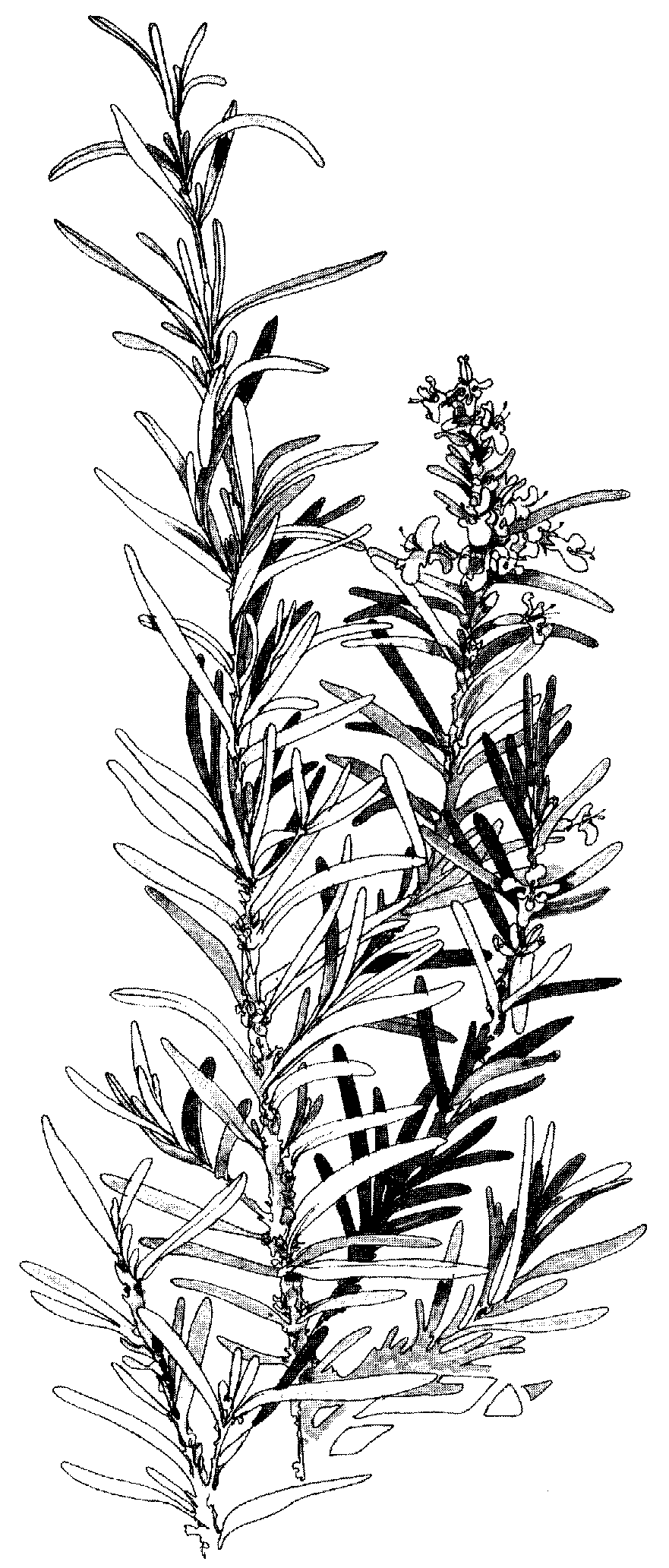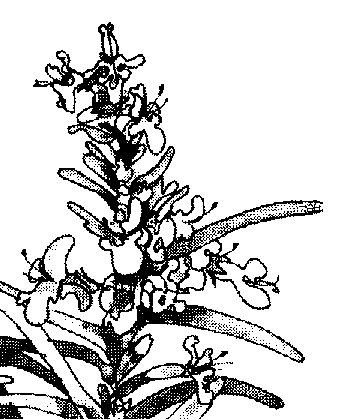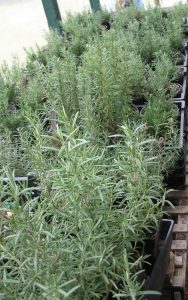| ABOUT YOUR ROSEMARY
Rosmarinus officianalis is a tender perennial that likes full sun, and a poor light soil with ample lime. The name rosemary comes from the Latin meaning dew of the sea, a reference to the appearance of coastal rosemary fields in bloom.
Native to western Mediterranean region, this evergreen perennial shrub has been a favorite plant of herb gardeners for centuries. Some is produced commercially in California but current imports come primarily from Spain, Portugal, Morocco, France, and Albania.
Rosemary grows from two to six feet tall with leaves up to 1½ inches long. Blue flowers appear mainly in late winter or early spring, when entire branches will be covered with blossoms.
CARING FOR ROSEMARY
Rosemary does well in containers. It enjoys living outdoors during the summer months, but will NOT survive the winter outdoors here in central Maine.
Bring your Rosemary indoors for the winter or store dormant in a cool cellar. Bringing Rosemary into a warm dry house after a cold spell can be a shock to the plant. Therefore, bring plants in before cold begins, or bring them into a cooler sunroom to live. To store in a cool, dark cellar, just leave the plant without watering.
Place in a south facing window where they enjoy 4–6 hours of full sun. If there is not enough light, they soon become leggy. Don’t over-water, which will produce symptoms such as brown leave tips and shedding leaves. Allow the soil to dry between waterings. If over-watered, it may develop root rot. Rosemary tolerates drought much better than it will wet feet. However, Rosemary does enjoy being misted, especially if you heat with wood.
HARVESTING ROSEMARY
Prune the plant for frequent kitchen use, severely if you like, leaving about half the length of the leaf stem. This benefits the appearance and encourages branching. Since you will only be using the leaves, you may harvest either the new green growth or an older woody stem.
When harvesting Rosemary sprigs, remember that you are pruning and shaping the plant whenever you take a twig. Rosemary can be pruned to topiary, bonsai or other fanciful shapes, or your goal may be simply a tall plant or a short branching plant. In any case, keep in mind that harvesting equals pruning. Prune after flowering to encourage bushy growth.
Rosemary grows quickly, so re-pot each spring into a slightly larger pot. Rosemary enjoys an occasional feeding of liquid seaweed or fish emulsion fertilizer.
USING ROSEMARY
Strip the leaves from your Rosemary sprig and chop the leaves finely to better distribute the flavor. Alternatively you may dry the leaves by hanging the sprig in a warm dry location not in direct sunlight. Then detach the leaves and store them in a tightly sealed jar.
Use the leaves and the flowering tops. Fresh or dried leaves are used to flavor meats. Finely chop the leaves or add sprigs that can be removed before serving. Very small amounts, usually as powder, are used in jams and biscuits. Fresh sprigs, steeped in vinegar, wine or olive oil flavor sauces and dressings.
Use in soups, stews, gravies or muffin batter. Add to water when cooking peas, potatoes or turnips. Sprinkle on meats before roasting or broiling. Contains vitamins A and C, phosphorous, potassium, iron, magnesium, zinc and is high in calcium.
Rosemary has a multitude of medicinal benefits. It is reported to be diuretic, diaphoretic, stimulative, astringent, carminative, antispasmodic. The tea has long been drunk to relieve headaches and sooth nervous tension. Rosemary stimulates digestion, circulation and bile secretion. It will bring on menstruation and has been reported to be abortive in large doses. A gargle will heal mouth ulcers and canker sores. Externally, Rosemary is used in liniment and ointments for rheumatism, neuralgic pains, bruises and sprains.
PROPAGATING ROSEMARY
Rosemary may be propagated from seeds, stem cuttings, layering, or divisions of older plants. Seeds are best started in early spring; they are slow to germinate, slow to grow and cultivars will not be true to form. Rosemary is best propagated from stem cuttings taken from vigorous spring growth. We have had equal success rooting cuttings in March and June where 8 or 9 out of 10 will grow into new plants.
You may want to increase the number of plants you have simply because you want more plants or as insurance against a plant not making it though the winter.
When starting new cuttings, clip a twig 3–6 inches long from the plant, and remove the leaves from the lower half of the twig. Insert the bare half of the twig into moist soil, and maintain the soil very moist for two weeks.
If you do not have access to a Rosemary of your own, we frequently offer Rosemary bunches for sale in our fresh herb display.
Watering with rooting hormone increases the chance of success. A natural rooting hormone tea may be made from the leaves or twig bark of willow trees. Make a gallon of strong willow tea in cold water and use it to water your Rosemary.
Keep the new plant in the shade for these two weeks as the new roots become established. After two weeks, move to full sun and water less often.
WHICH ROSEMARY?
We offer Rosemary plants in three sizes.
- Started cuttings in 4 inch pots. This is the least expensive way to buy a Rosemary, and in the coming years you will always remember that you knew her since she was but a twig.
- Year old plants in six inch pots. This is our most popular size, since it is large enough to begin some immediate harvesting and shaping. They make excellent gifts, too.
- Large 3+ year old plants. These are popular with real Rosemary fans, folks who don’t want to wait for their Rosemary to grow in order to do regular harvests, and those who want a nice large aromatic plant for their sunroom.
We invite you to adopt a pet Rosemary for your home.
Congratulations on you new pet Rosemary.
|
 This website is licensed under a
This website is licensed under a 

